Finite Element Analysis on Ultrasonic Drawing Process of Fine Titanium Wire
Abstract
:1. Introduction
2. Finite Element (FE) Model Establishment and Simulation Procedure
3. Results and Discussion
3.1. Influence of Die Location on Drawing Force
3.2. Influence of Ultrasonic Amplitude on Drawing Force
3.3. Influence of Drawing Speed on Drawing Force
3.4. Influence of Friction Coefficient on Drawing Force
3.5. Influence of Ultrasonic Vibration on Stress Distribution
4. Conclusions
- (1)
- Ultrasonic metal wire drawing process can be interpreted as the frictional contact problem between a certain length of deformable metallic string and the rigid die. The drawing force reduction caused by the addition of ultrasonic vibration could be attributed to the stretching vibration of the wire, which locates between the reel and the die. When the reel-die distance approximates the half-wavelength of ultrasonic vibration when propagating in the metallic material, the drawing force saw the greatest decline.
- (2)
- In the ultrasonic drawing process, an oscillation cycle of the die could be divided into two phases: the plastic deformation phase and the stretching vibration phase. The time distribution between them is determined by the ultrasonic amplitude and wire drawing speed. The drawing force reduction increases with the increment of ultrasonic amplitude and decrease in drawing speed.
- (3)
- Ultrasonic vibration has almost no effect on the overall friction coefficient, except for the half-wavelength condition or when the reel-die distance is very small.
- (4)
- There is no separation between the wire and the die at the reduction area for single-pass ultrasonic wire drawing when the back-pull force is not considered. Ultrasonic vibrations do have influences on the internal equivalent stress of the wire and the contact stress at the wire-die interface, however, only slightly.
Author Contributions
Funding
Conflicts of Interest
References
- Baudana, G.; Biamino, S.; Ugues, D.; Lombardi, M.; Fino, P.; Pavese, M.; Badini, C. Titanium aluminides for aerospace and automotive applications processed by Electron Beam Melting: Contribution of Politecnico di Torino. Met. Powder Rep. 2016, 71, 193–199. [Google Scholar] [CrossRef]
- Soro, N.; Brassart, L.; Chen, Y.; Veidt, M.; Attar, H.; Dargusch, M.S. Finite Element Analysis of Porous Commercially Pure Titanium for Biomedical Implant Application STZ-based modelling of plasticity in Li-Si alloys View project Mechanics of Interfaces: Evolving microstructure and conduction properties View project Finite element analysis of porous commercially pure titanium for biomedical implant application. Mater. Sci. Eng. A 2018, 725, 43–50. [Google Scholar]
- Attar, H.; Bermingham, M.J.; Ehtemam-Haghighi, S.; Dehghan-Manshadi, A.; Kent, D.; Dargusch, M.S. Evaluation of the mechanical and wear properties of titanium produced by three different additive manufacturing methods for biomedical application. Mater. Sci. Eng. A 2019, 760, 339–345. [Google Scholar] [CrossRef]
- Xiang, C.; Guo, J.; Chen, Y.; Hao, L.; Davis, S. Development of a SMA-Fishing-Line-McKibben Bending Actuator. IEEE Access 2018, 6, 27183–27189. [Google Scholar] [CrossRef]
- Arikatla, S.P.; Tamil Mannan, K.; Krishnaiah, A. Surface Integrity Characteristics in Wire Electrical Discharge Machining of Titanium Alloy during Main cut and Trim cuts. In Proceedings of the Materials Today: Proceedings, Hyderabad, India, 31 December 2017; Volume 4, pp. 1500–1509. [Google Scholar]
- Liu, S.; Shan, X.; Guo, K.; Yang, Y.; Xie, T. Experimental study on titanium wire drawing with ultrasonic vibration. Ultrasonics 2018, 83, 60–67. [Google Scholar] [CrossRef] [PubMed]
- Xie, Z.; Guan, Y.; Zhu, L.; Zhai, J.; Lin, J.; Yu, X. Investigations on the surface effect of ultrasonic vibration-assisted 6063 aluminum alloy ring upsetting. Int. J. Adv. Manuf. Technol. 2018, 96, 4407–4421. [Google Scholar] [CrossRef]
- Chen, C.Y.; Anok Melo Cristino, V.; Hung, C. Effects of ultrasonic vibration on SUS304 stainless steel subjected to uniaxial plastic deformation. J. Chin. Inst. Eng. Trans. Chin. Inst. Eng. A 2018, 41, 327–332. [Google Scholar] [CrossRef]
- Narkevich, N.A.; Tolmachev, A.I.; Vlasov, I.V.; Surikova, N.S. Structure and Mechanical Properties of Nitrogen Austenitic Steel after Ultrasonic Forging. Phys. Met. Metallogr. 2016, 117, 288–294. [Google Scholar] [CrossRef]
- Wang, K.; Shriver, D.; Li, Y.; Banu, M.; Hu, S.J.; Xiao, G.; Arinez, J.; Fan, H.T. Characterization of weld attributes in ultrasonic welding of short carbon fiber reinforced thermoplastic composites. J. Manuf. Process. 2017, 29, 124–132. [Google Scholar] [CrossRef]
- Xiang, D.H.; Wu, B.F.; Yao, Y.L.; Zhao, B.; Tang, J.Y. Ultrasonic Vibration Assisted Cutting of Nomex Honeycomb Core Materials. Int. J. Precis. Eng. Manuf. 2019, 20, 27–36. [Google Scholar] [CrossRef]
- Blaha, F.; Langenecker, B. Tensile deformation of zinc crystal under ultrasonic vibration. Naturwissenschaften 1955, 42, 556. [Google Scholar] [CrossRef]
- Winsper, C.E.; Sansome, D.H. The superposition of longitudinal sonic oscillations on the wire drawing process. Proc. Inst. Mech. Eng. 1968, 183, 545–562. [Google Scholar] [CrossRef]
- Hayashi, M.; Jin, M.; Thipprakmas, S.; Murakawa, M.; Hung, J.-C.; Tsai, Y.-C.; Hung, C.-H. Simulation of ultrasonic-vibration drawing using the finite element method (FEM). J. Mater. Process. Technol. 2003, 140, 30–35. [Google Scholar] [CrossRef]
- Susan, M.; Bujoreanu, L. The metal-tool contact friction at the ultrasonic vibration drawing of ball-bearing steel wires. Rev. Metal. 1999, 35, 379–383. [Google Scholar] [CrossRef] [Green Version]
- Susan, M.; Bujoreanu, L.; Găluşcă, D.; Munteanu, C. lnfluence of the relative deformation rate on tube processing by ultrasonic vibration drawing. Rev. Met. 2004, 40, 109–117. [Google Scholar] [CrossRef]
- Qi, H.; Shan, X.; Xie, T. Design and Experiment of the High Speed Wire Drawing with Ultrasound. Chin. J. Mech. Eng. 2009, 22, 580–586. [Google Scholar] [CrossRef]
- Shan, X.; Qi, H.; Wang, L.; Xie, T. A new model of the antifriction effect on wiredrawing with ultrasound. Int. J. Adv. Manuf. Technol. 2012, 63, 1047–1056. [Google Scholar] [CrossRef]
- Yang, C.; Shan, X.; Xie, T. Titanium wire drawing with longitudinal-torsional composite ultrasonic vibration. Int. J. Adv. Manuf. Technol. 2016, 83, 645–655. [Google Scholar] [CrossRef]
- Liu, S.; Yang, Y.; Xie, T.; Shan, X. Experimental Study on Fine Titanium Wire Drawing with Two Ultrasonically Oscillating Dies. IEEE Access 2018, 6, 16576–16587. [Google Scholar] [CrossRef]
- Wang, X.; Wang, C.; Sun, F.; Ding, C. Simulation and experimental researches on HFCVD diamond film growth on small inner-hole surface of wire-drawing die with no filament through the hole. Surf. Coat. Technol. 2018, 339, 1–13. [Google Scholar] [CrossRef]
- Achard, V.; Daidie, A.; Paredes, M.; Chirol, C. Optimization of the Cold Expansion Process for Titanium Holes. Adv. Eng. Mater. 2017, 19, 1500626. [Google Scholar] [CrossRef]
- Avitzur, B.; Narayan, C.; Chou, Y.T. Upper-bound solutions for flow through conical converging dies. Int. J. Mach. Tool Des. Res. 1982, 22, 197–214. [Google Scholar] [CrossRef] [Green Version]
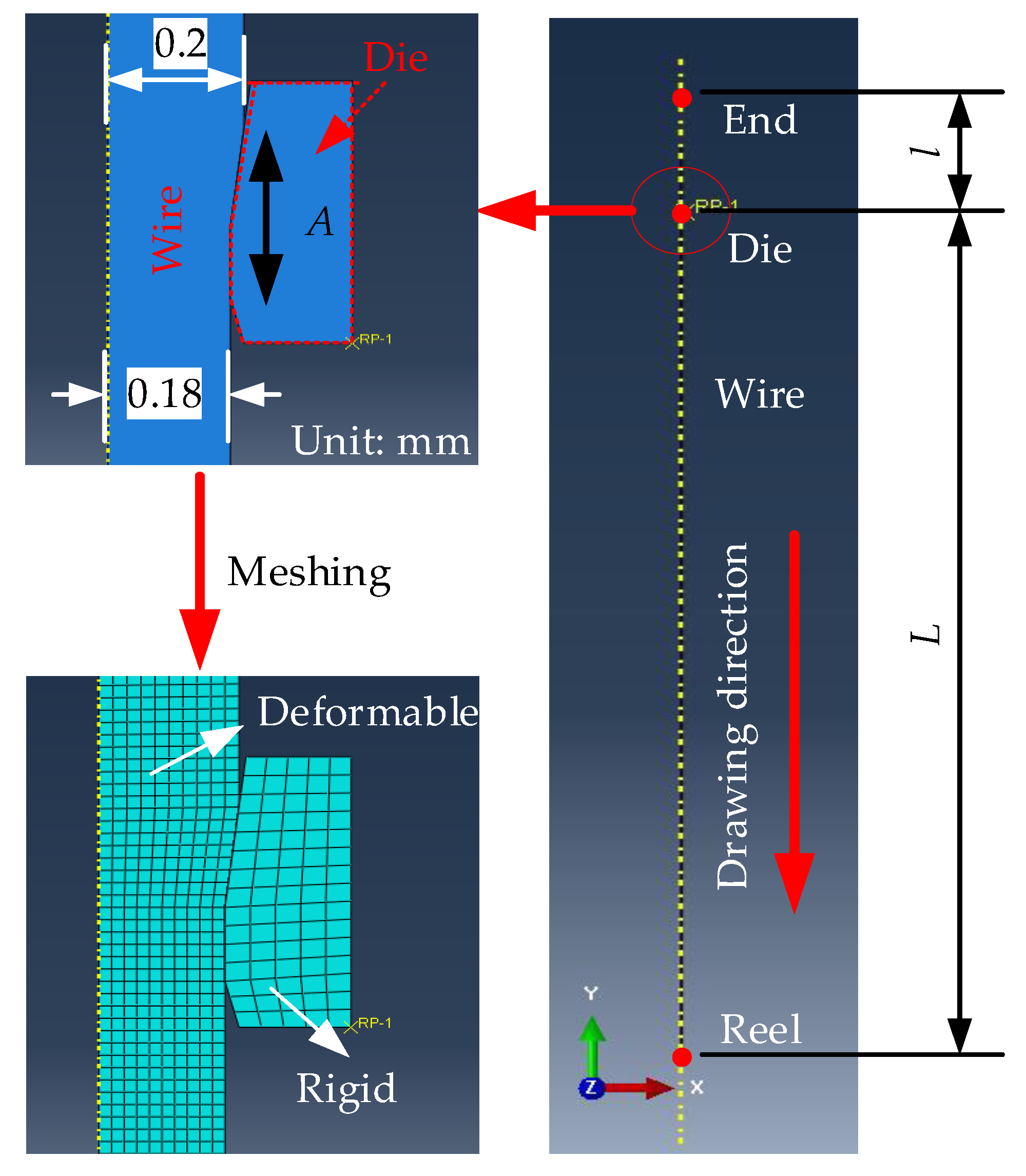
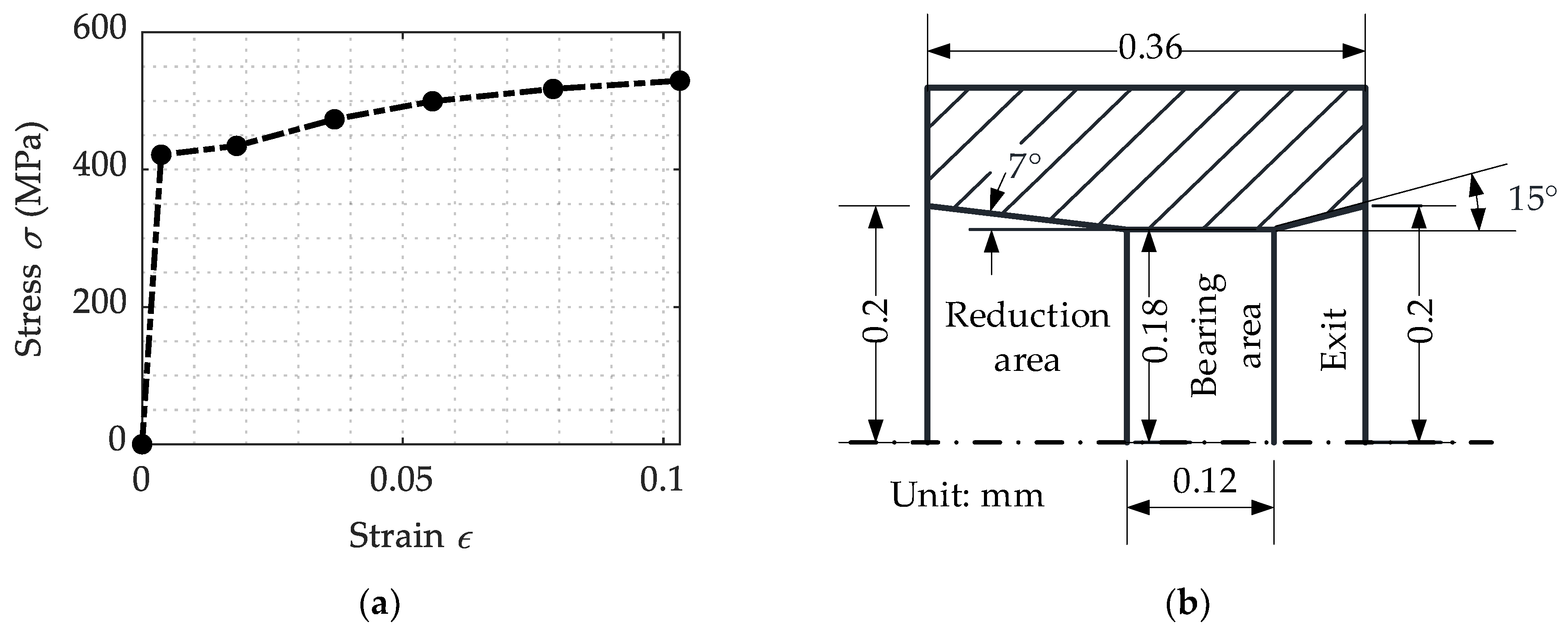
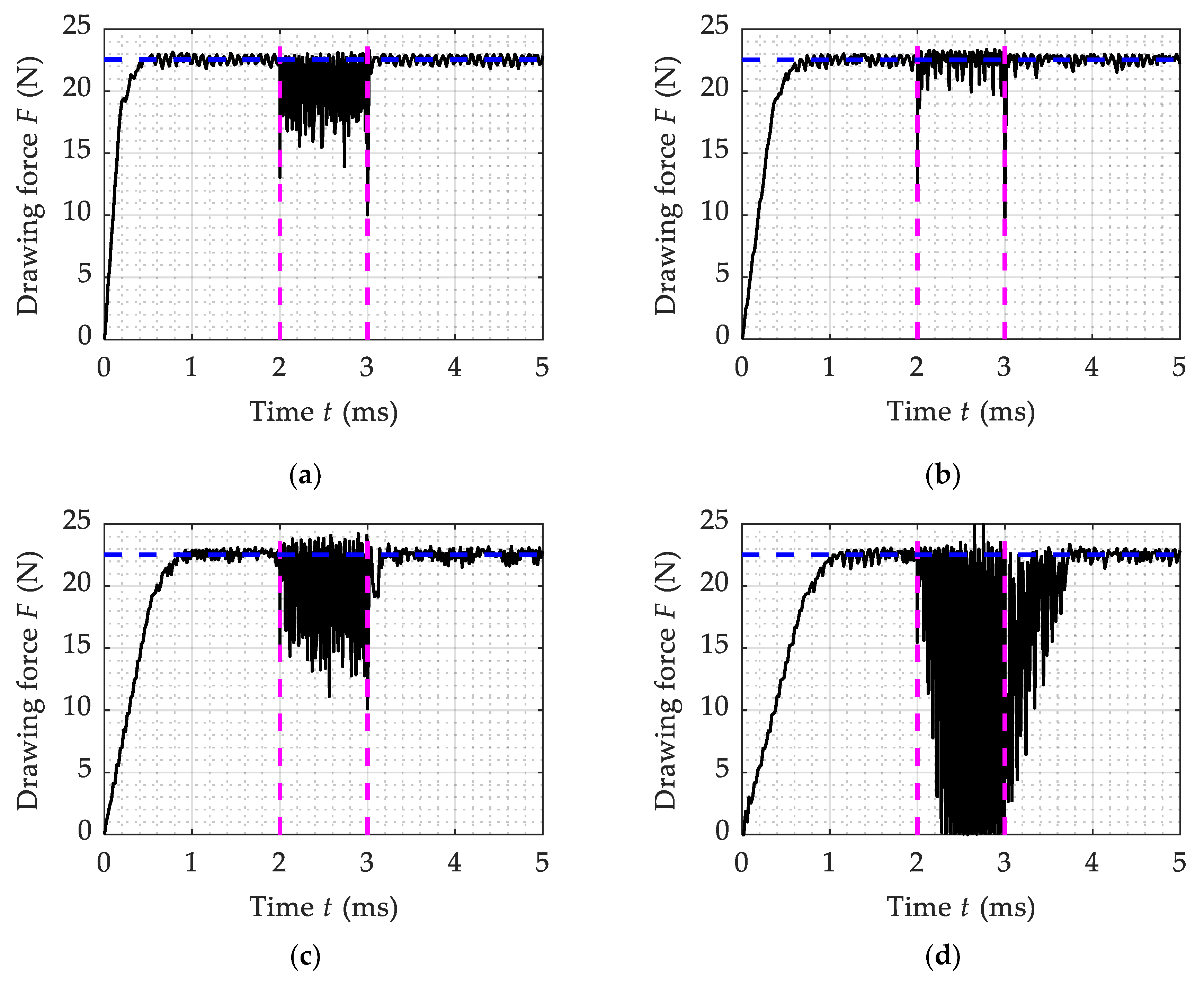
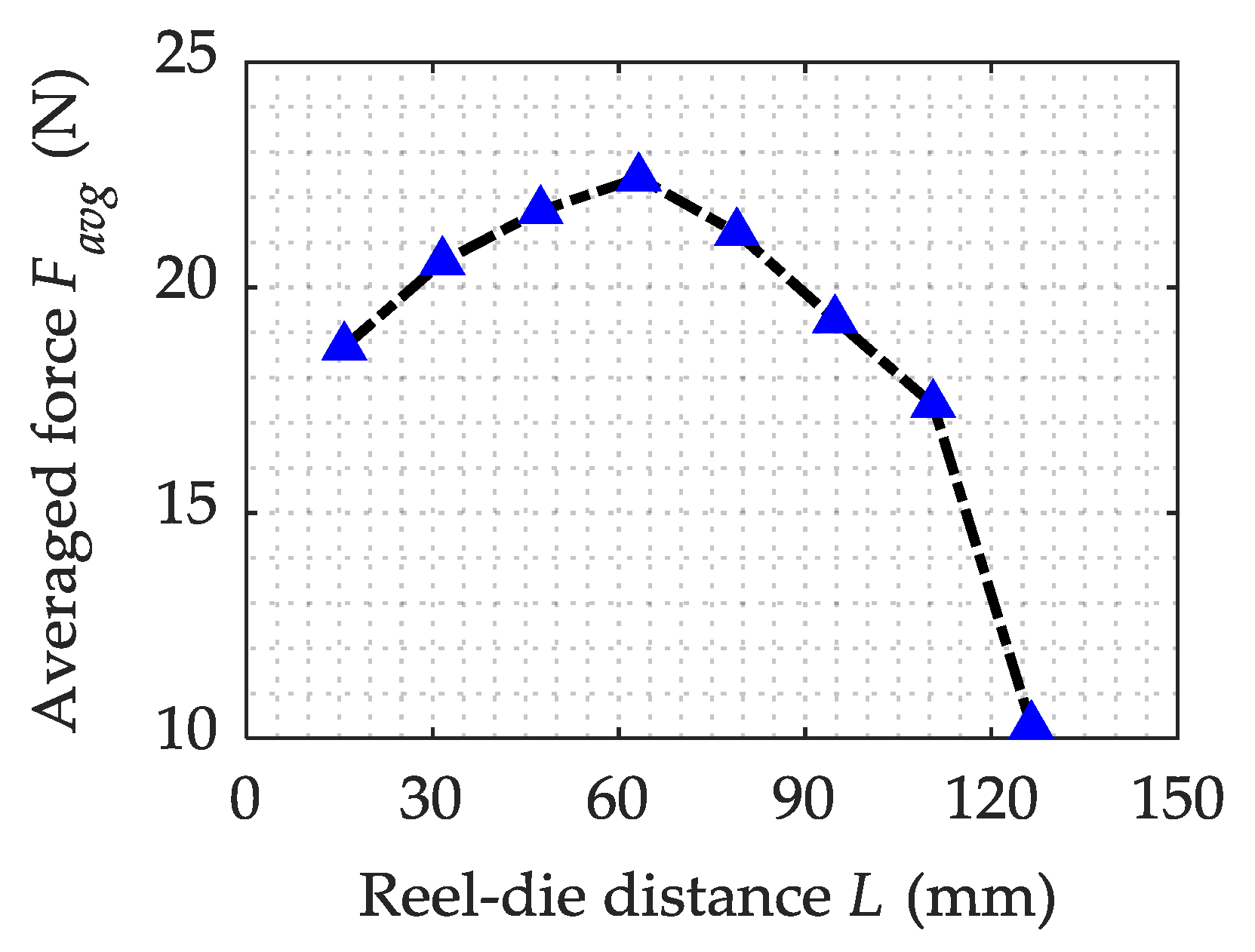
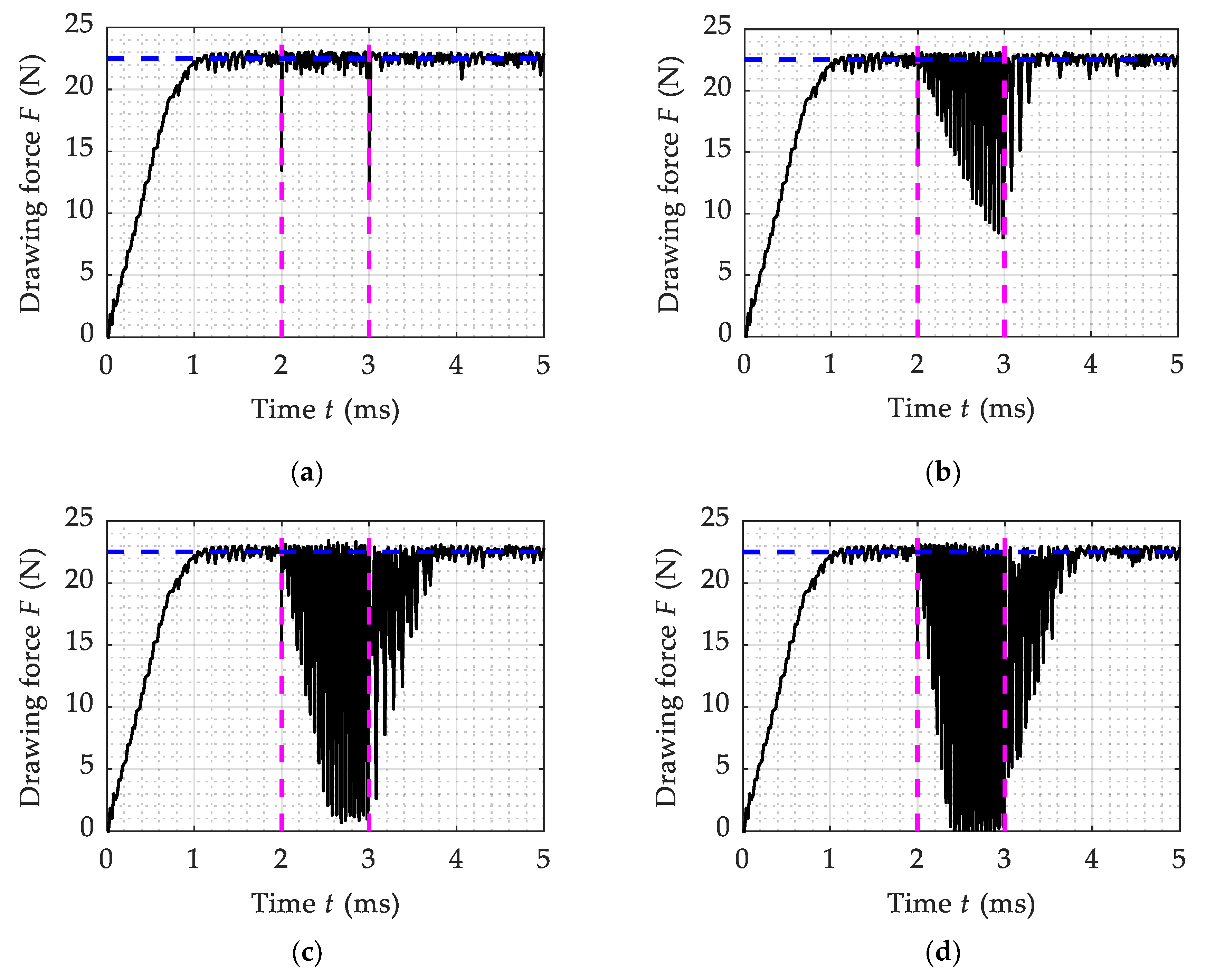
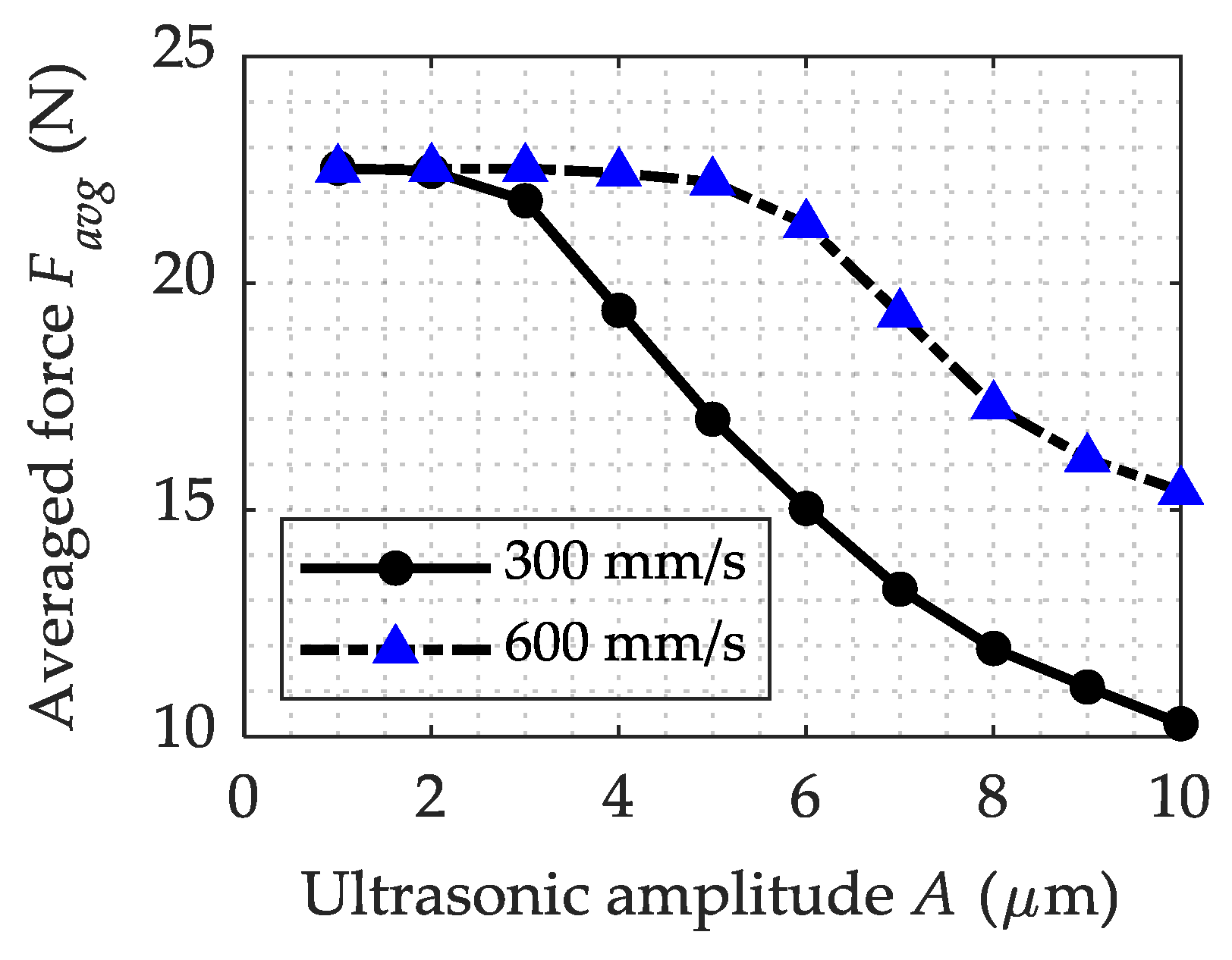
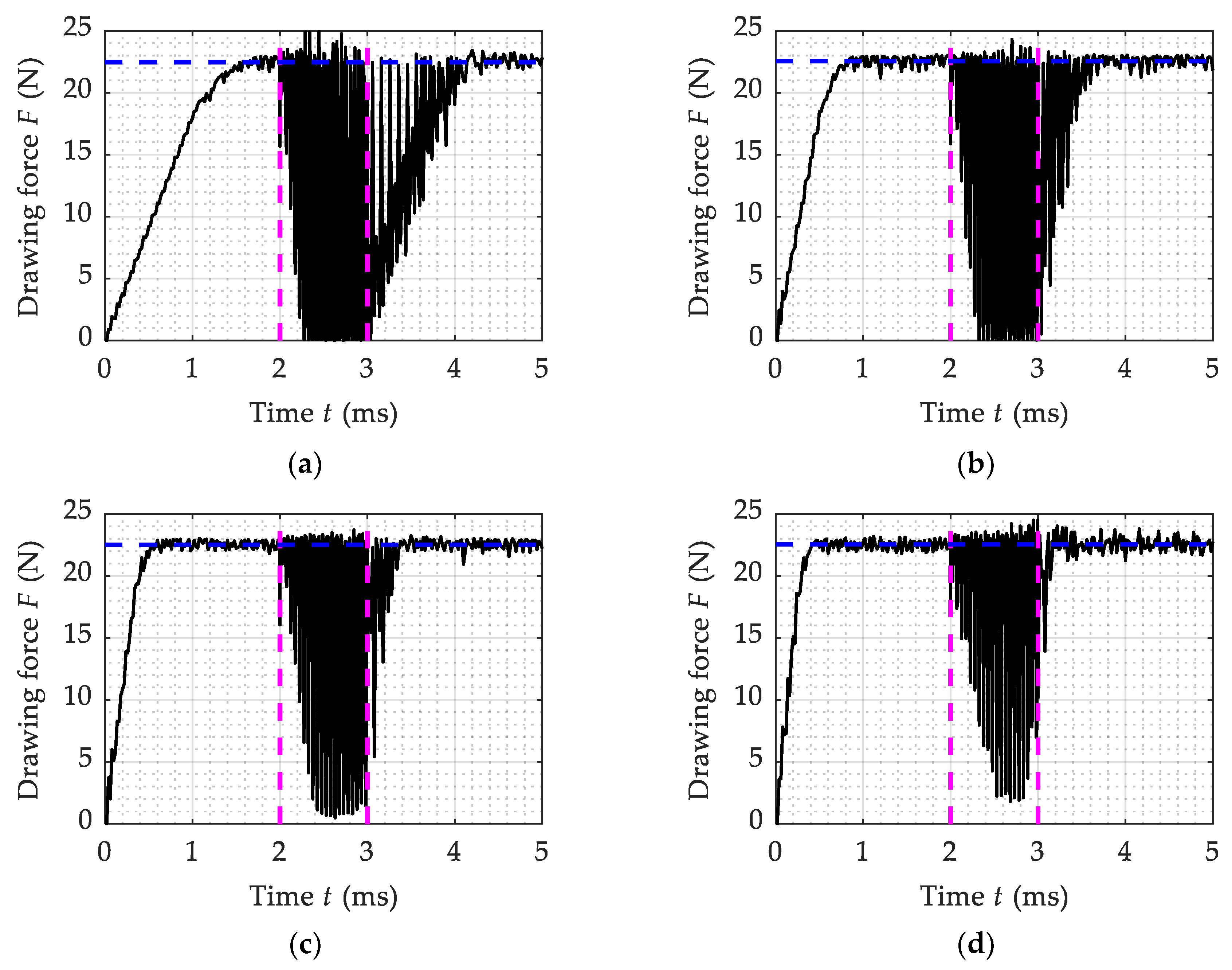

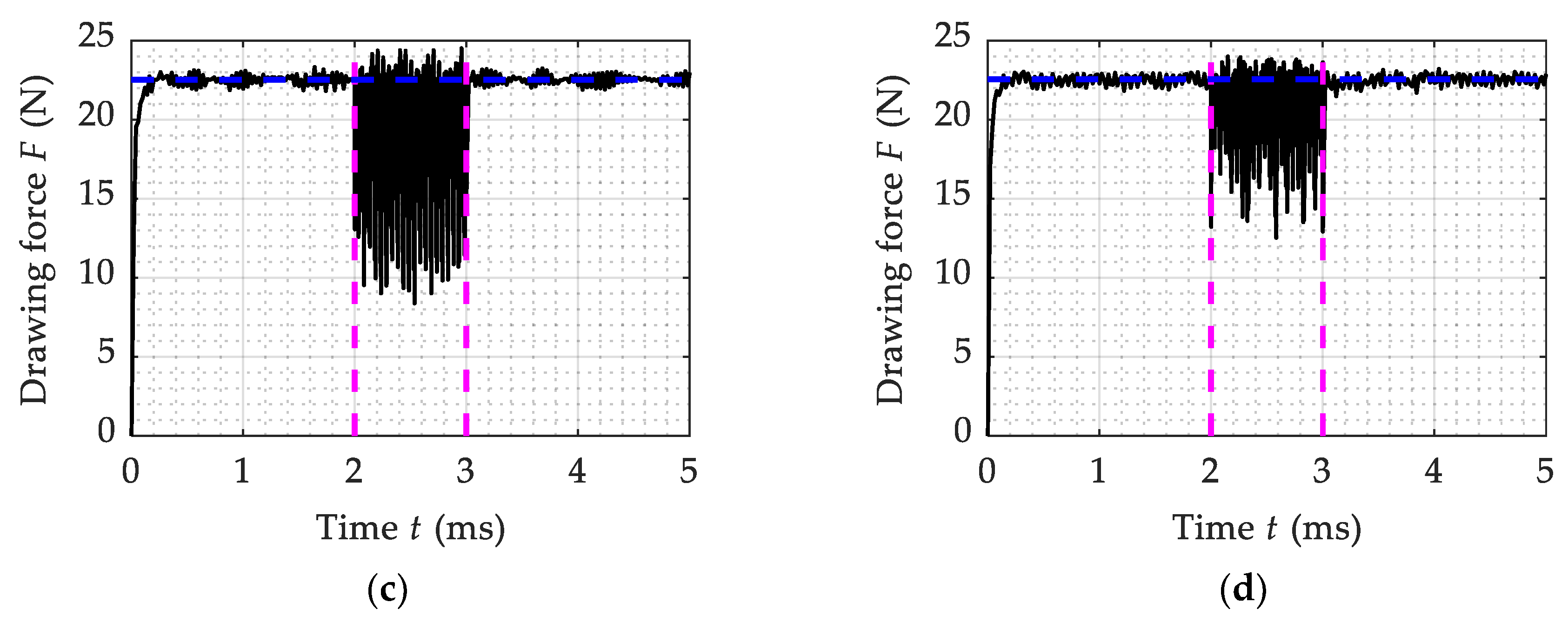

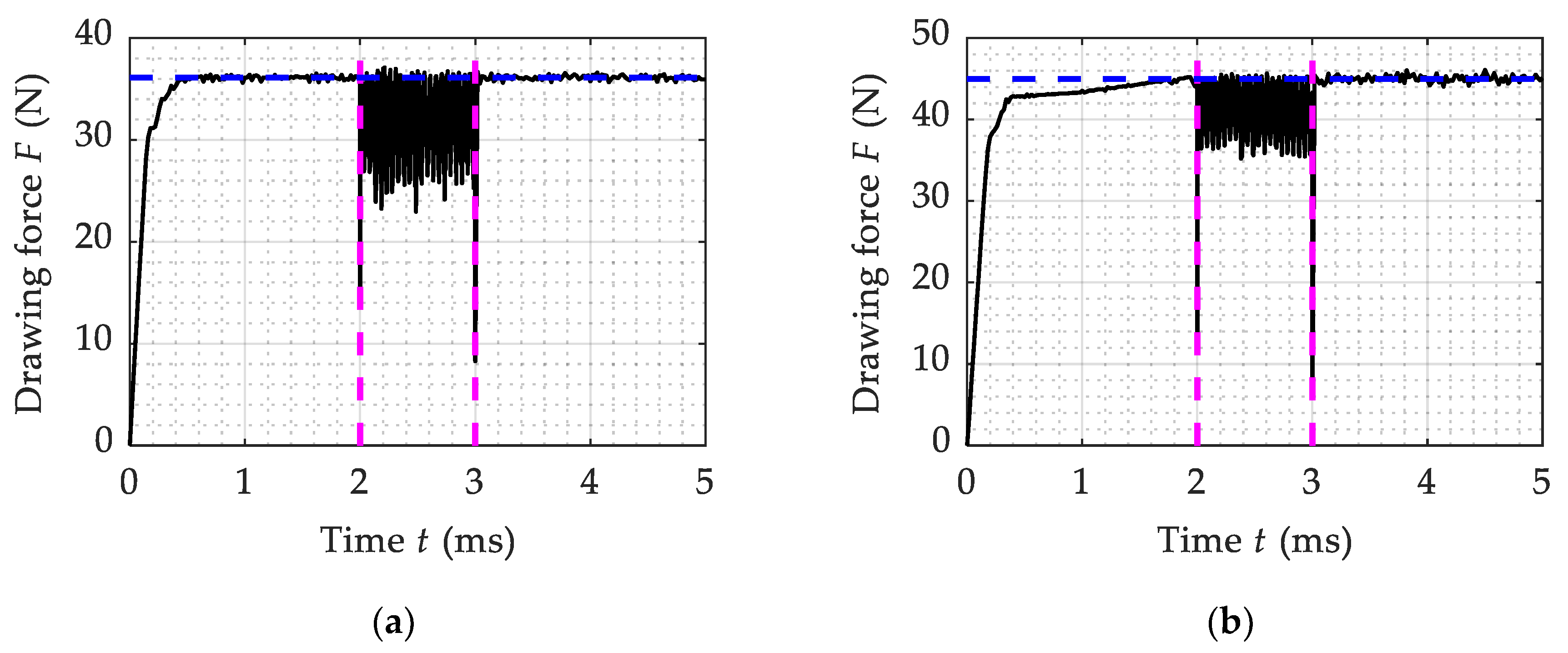
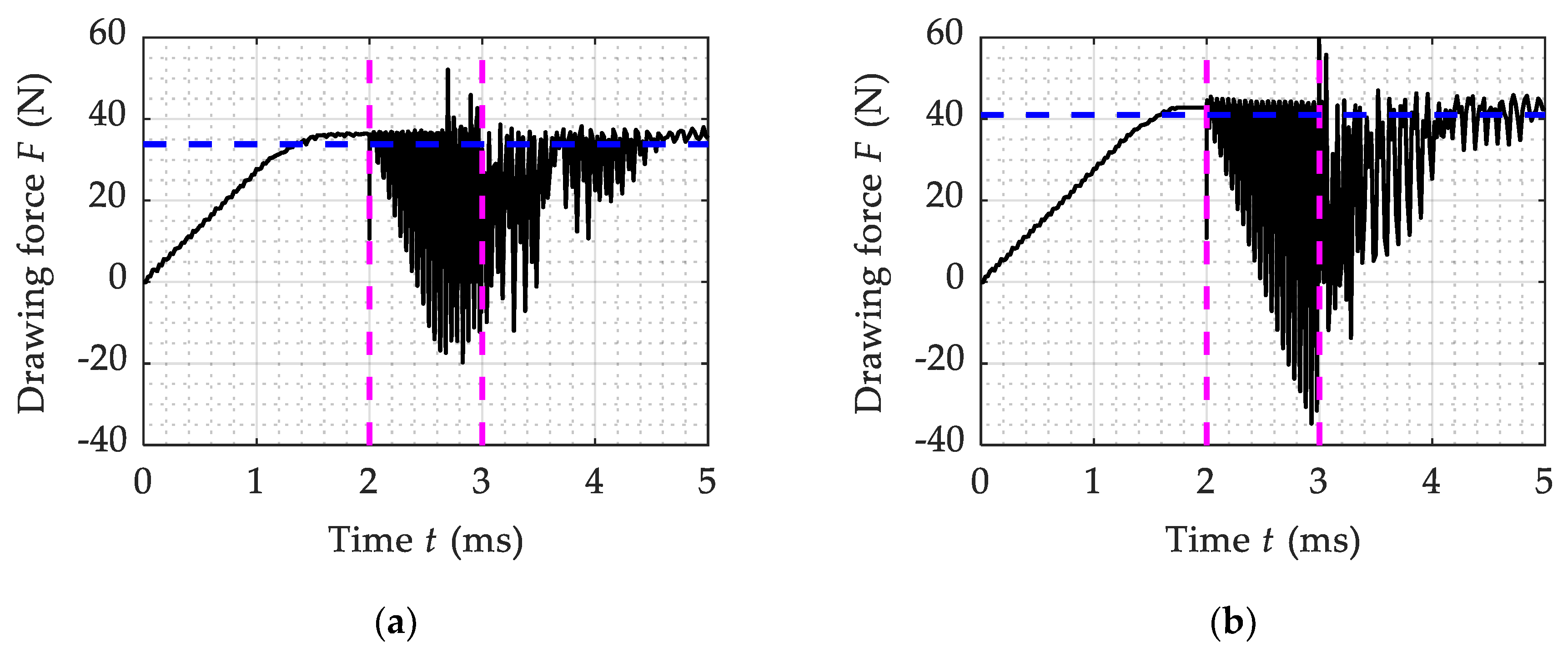
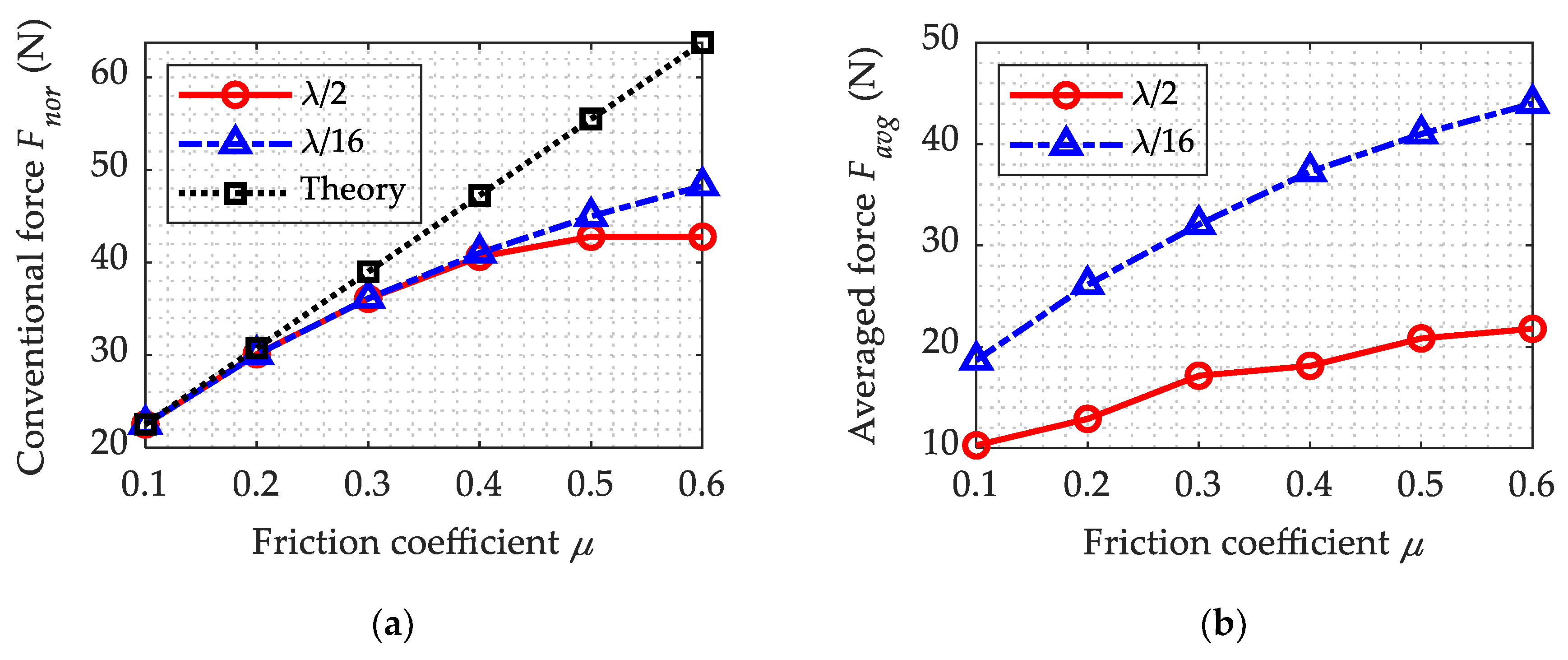

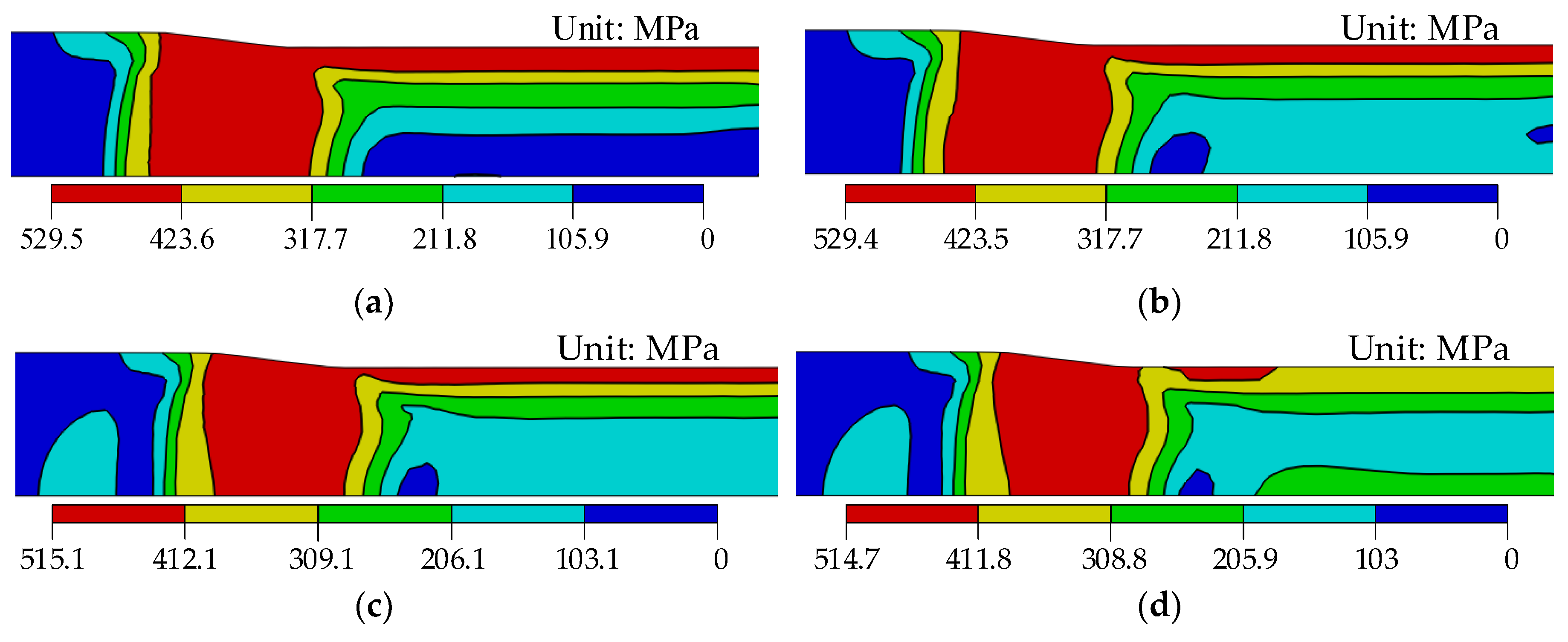

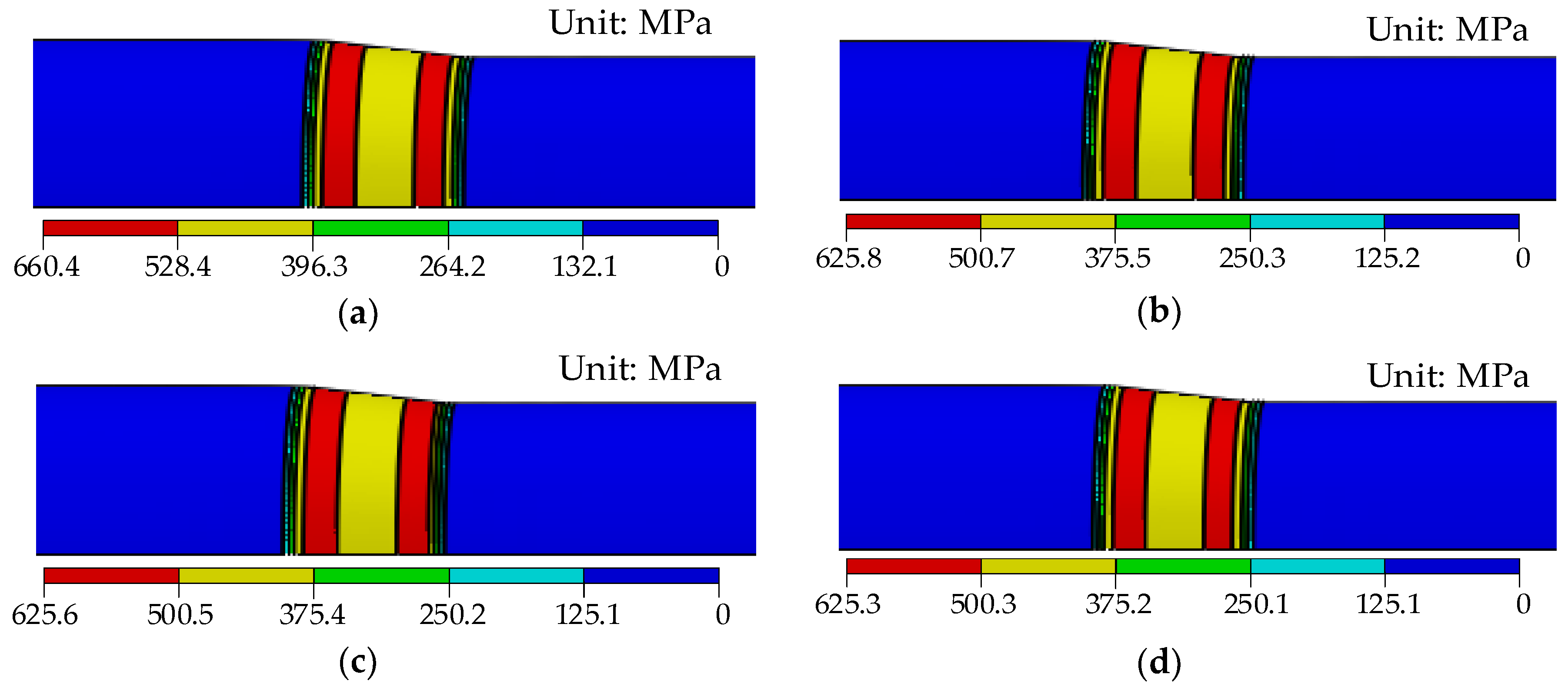
© 2020 by the authors. Licensee MDPI, Basel, Switzerland. This article is an open access article distributed under the terms and conditions of the Creative Commons Attribution (CC BY) license (http://creativecommons.org/licenses/by/4.0/).
Share and Cite
Liu, S.; Shan, X.; Cao, H.; Xie, T. Finite Element Analysis on Ultrasonic Drawing Process of Fine Titanium Wire. Metals 2020, 10, 575. https://doi.org/10.3390/met10050575
Liu S, Shan X, Cao H, Xie T. Finite Element Analysis on Ultrasonic Drawing Process of Fine Titanium Wire. Metals. 2020; 10(5):575. https://doi.org/10.3390/met10050575
Chicago/Turabian StyleLiu, Shen, Xiaobiao Shan, Hengqiang Cao, and Tao Xie. 2020. "Finite Element Analysis on Ultrasonic Drawing Process of Fine Titanium Wire" Metals 10, no. 5: 575. https://doi.org/10.3390/met10050575




